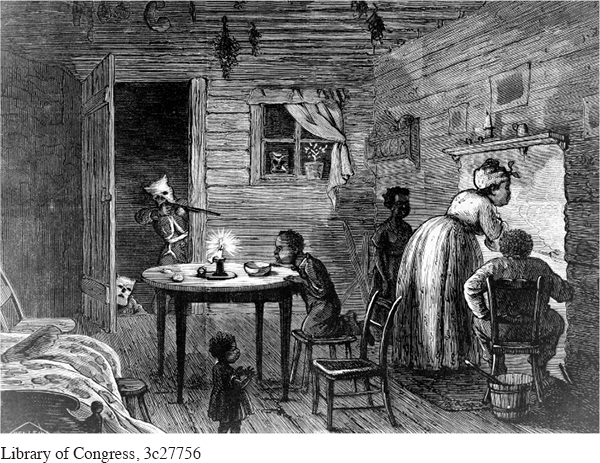White Resistance to Congressional Reconstruction
Despite the Republican record of accomplishment during Reconstruction, white Southerners did not accept its legitimacy. They accused interracial governments of conducting a spending spree that raised taxes and encouraged corruption. Indeed, taxes did rise significantly, but mainly because legislatures funded much-needed educational and social services. Corruption on building projects and railroad construction was common during this time. Still, it is unfair to single out Reconstruction governments and especially black legislators as inherently depraved, as their Democratic opponents acted the same way when given the opportunity. Economic scandals were part of American life after the Civil War. As enormous business opportunities arose in the postwar years, many economic and political leaders made unlawful deals to enrich themselves. Furthermore, southern opponents of Reconstruction exaggerated its harshness. In contrast to revolutions and civil wars in other countries, only one rebel was executed for war crimes (the commandant of Andersonville Prison in Georgia); only one high-ranking official went to prison (Jefferson Davis); no official was forced into exile, though some fled voluntarily; and most rebels regained voting rights and the ability to hold office within seven years after the end of the rebellion.
Most important, these Reconstruction governments had only limited opportunities to transform the South. By the end of 1870, civilian rule had returned to all of the former Confederate states, and they had reentered the Union. Republican rule did not continue past 1870 in Virginia, North Carolina, and Tennessee and did not extend beyond 1871 in Georgia and 1873 in Texas. In 1874 Democrats deposed Republicans in Arkansas and Alabama; two years later, Democrats triumphed in Mississippi. In only three states—Louisiana, Florida, and South Carolina—did Reconstruction last until 1877.
The Democrats who replaced Republicans trumpeted their victories as bringing “redemption” to the South. Of course, these so-called Redeemers were referring to the white South. For black Republicans and their white allies, redemption meant defeat. Democratic victories came at the ballot boxes, but violence, intimidation, and fraud paved the way. In 1865 in Pulaski, Tennessee, General Nathan Bedford Forrest organized Confederate veterans into a social club called the Knights of the Ku Klux Klan (KKK). Spreading throughout the South, its followers donned robes and masks to hide their identities and terrify their victims. Gun-wielding Ku Kluxers rode on horseback to the homes and churches of black and white Republicans to keep them from voting. When threats did not work, they beat and murdered their victims. In 1871, for example, 150 African Americans were killed in Jackson County in the Florida Panhandle. A black clergyman lamented, “That is where Satan has his seat.” There and elsewhere, many of the individuals targeted had managed to buy property, gain political leadership, or in other ways defy white stereotypes of African American inferiority. Other white supremacist organizations joined the Klan in waging a reign of terror. During the 1875 election in Mississippi, which toppled the Republican government, armed terrorists killed hundreds of Republicans and scared many more away from the polls.

To combat the terror unleashed by the Klan and its allies, Congress passed three Force Acts in 1870 and 1871. These measures empowered the president to dispatch officials into the South to supervise elections and prevent voting interference. Directed specifically at the KKK, one law barred secret organizations from using force to violate equal protection of the laws. In 1872 Congress established a joint committee to probe Klan tactics, and its investigations produced thirteen volumes of gripping testimony about the horrors perpetrated by the Klan. Elias Hill, a freedman from South Carolina who had become a Baptist preacher and teacher, was one of those who appeared before Congress. He and his brother lived next door to each other. The Klansmen went first to his brother’s house, where, as Hill testified, they “broke open the door and attacked his wife, and I heard her screaming and mourning [moaning]. . . . At last I heard them have [rape] her in the yard.” When the Klansmen discovered Elias Hill, they dragged him out of his house and beat, whipped, and threatened to kill him. On the basis of such testimony, the federal government prosecuted some 3,000 Klansmen. Only 600 were convicted, however. As the Klan disbanded in the wake of federal prosecutions, other vigilante organizations arose to take its place.
REVIEW & RELATE
What role did black people play in remaking southern society during Reconstruction?
How did southern whites fight back against Reconstruction? What role did terrorism and political violence play in this effort?
Exploring American HistoriesPrinted Page 469
Exploring American Histories Value EditionPrinted Page 346
Chapter Timeline